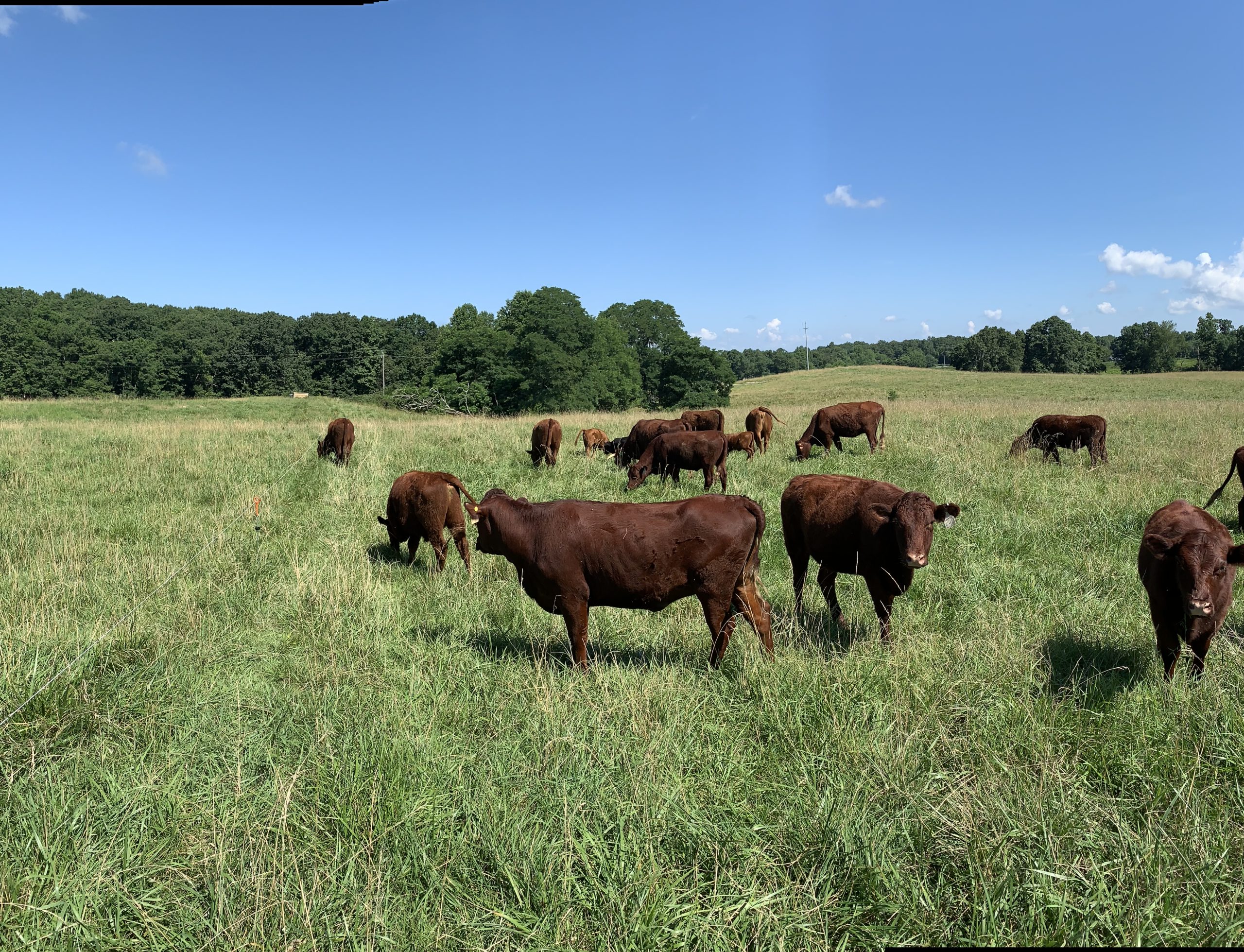Growing up, I spent some time working on dairy farms in Upstate New York. At the time I swore that I would never be a farmer. Hot summer days spent stacking hay in the top of a barn and cold winter mornings mucking manure did not instill a romantic image of farming. The one thing that stuck with me was the majestic view of cattle grazing on the hillside.
When we first started regenerating our property by converting a clear cut into pasture, we used breeds of cattle based solely on their ability to browse more woody vegetation. This herd of Texas Longhorns and Scottish Highlands (along with our goats) helped keep the briars at bay and establish grass. Unfortunately, the processed steers yielded inconsistent quality of meat and cuts.

Knowing we wanted to raise high quality grass-fed beef, we did hours of research on what type of cattle would work best for our farm. Pretty quickly, it became clear that Red Devon cows would be perfect for our farm.
We have four daughters and often have cousins coming to visit and play. One of the major attractions was how docile Red Devon are. Having the peace of mind knowing that with a bit of precaution, our kids would be safe around the cows had major appeal. My 10, 8, and 6 year old daughters can work together to move the cattle on their daily move from pasture to pasture.
Another crucial characteristic that sold us on this breed was the low-input high-output of Red Devon. When thinking of the bottom line, we needed to be able to finish our steers in two years. Their ability to gain so well on quality pasture in addition to their early maturity, high fertility, and natural mothering instincts sealed the deal on our choice of Red Devon cattle.
